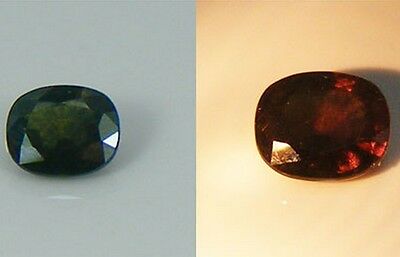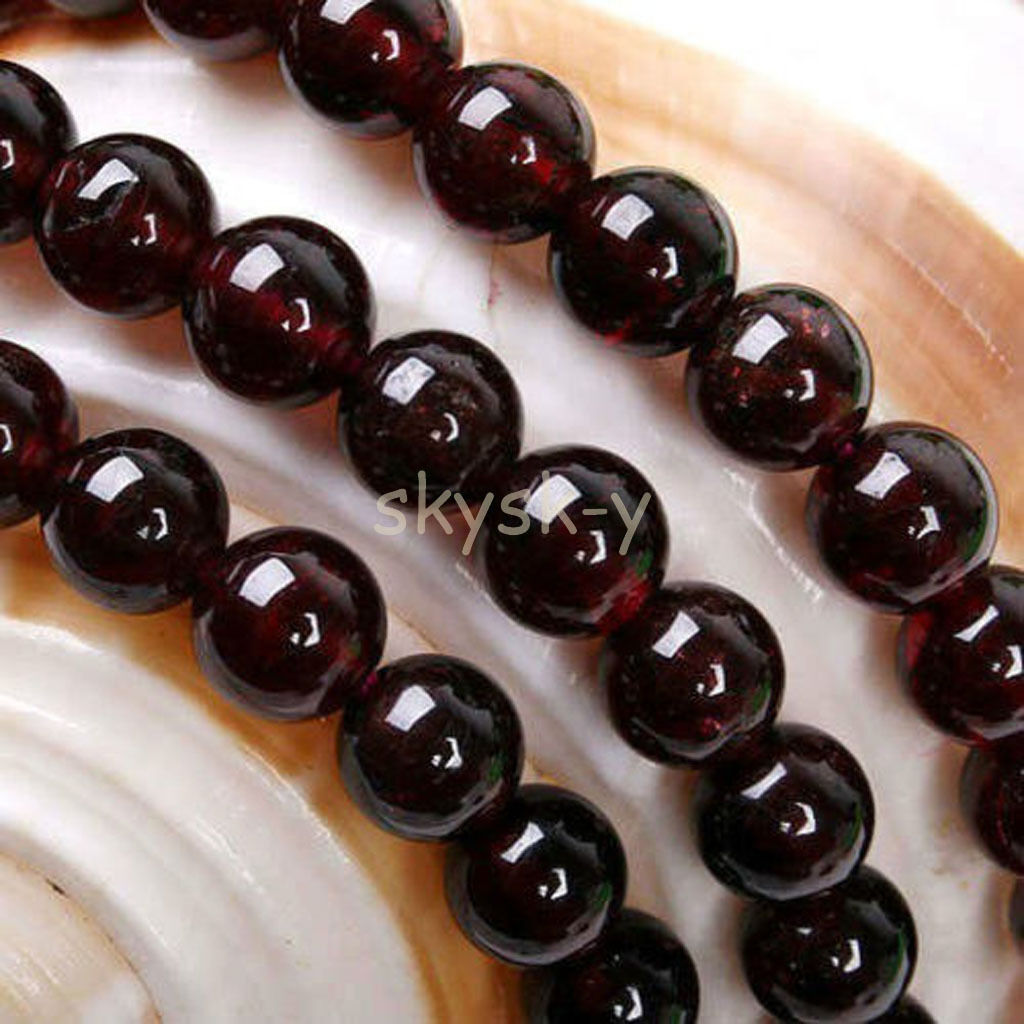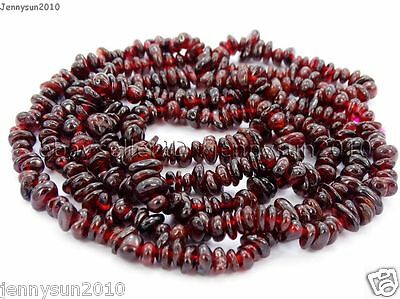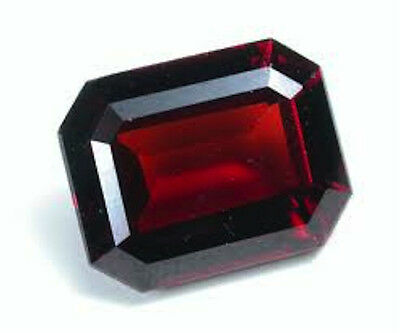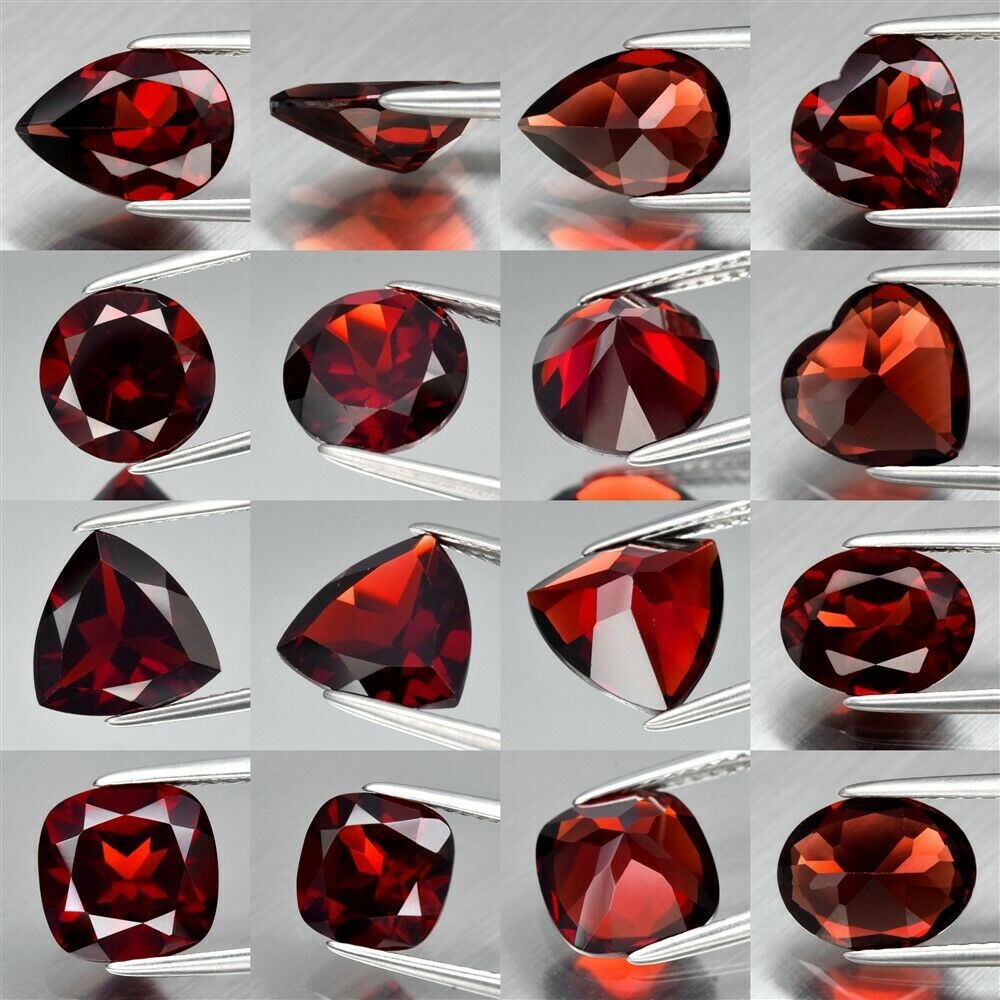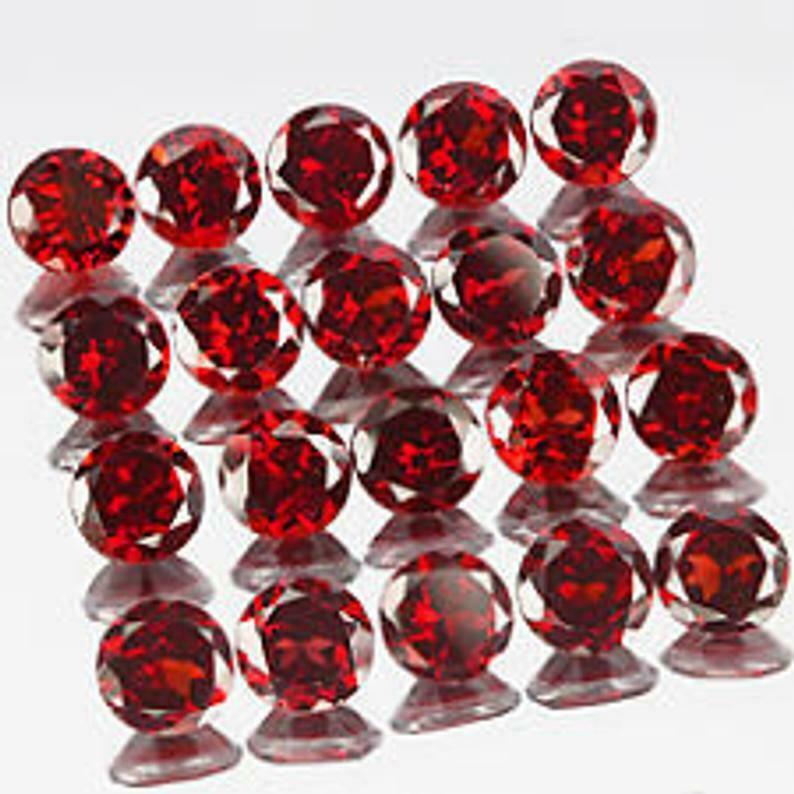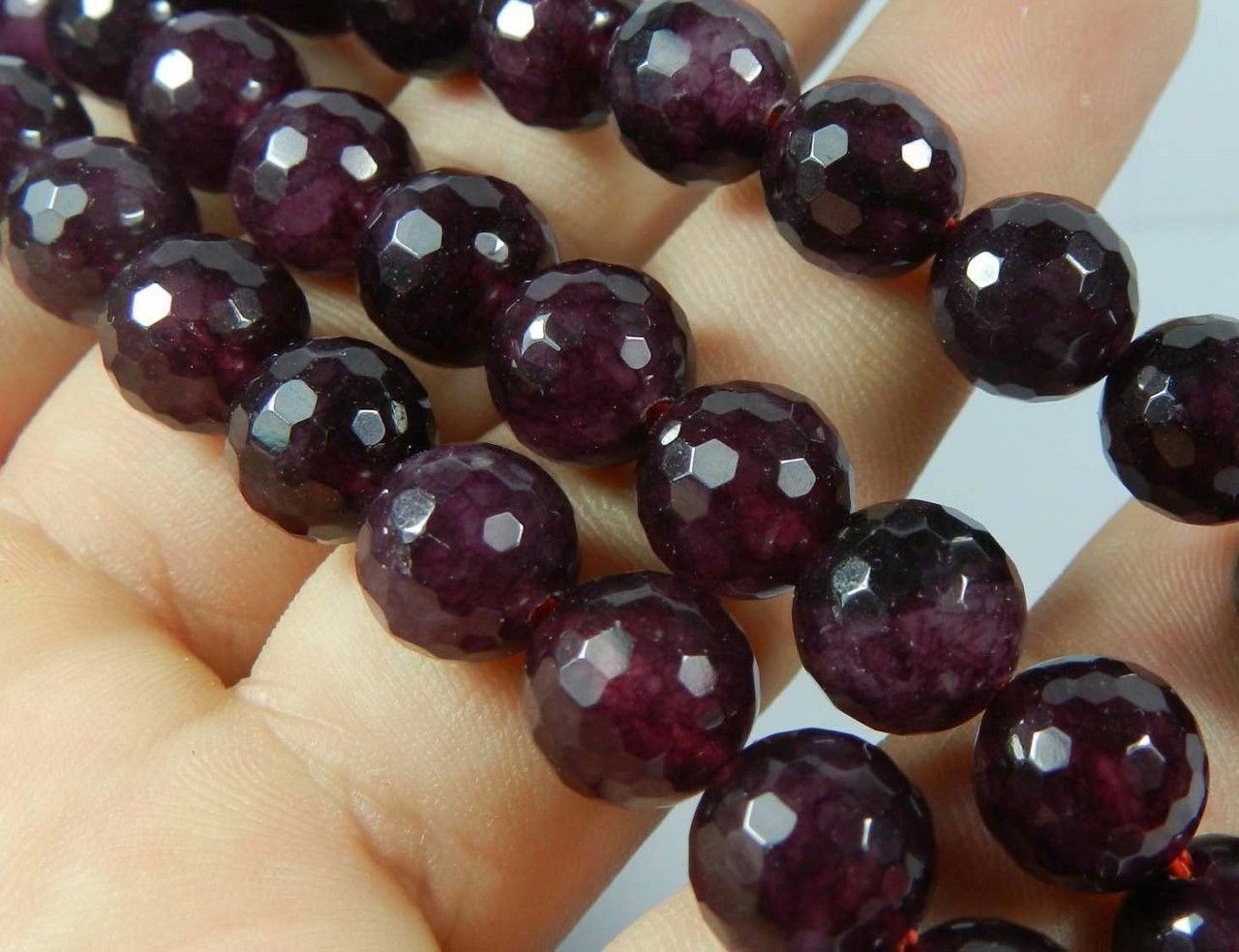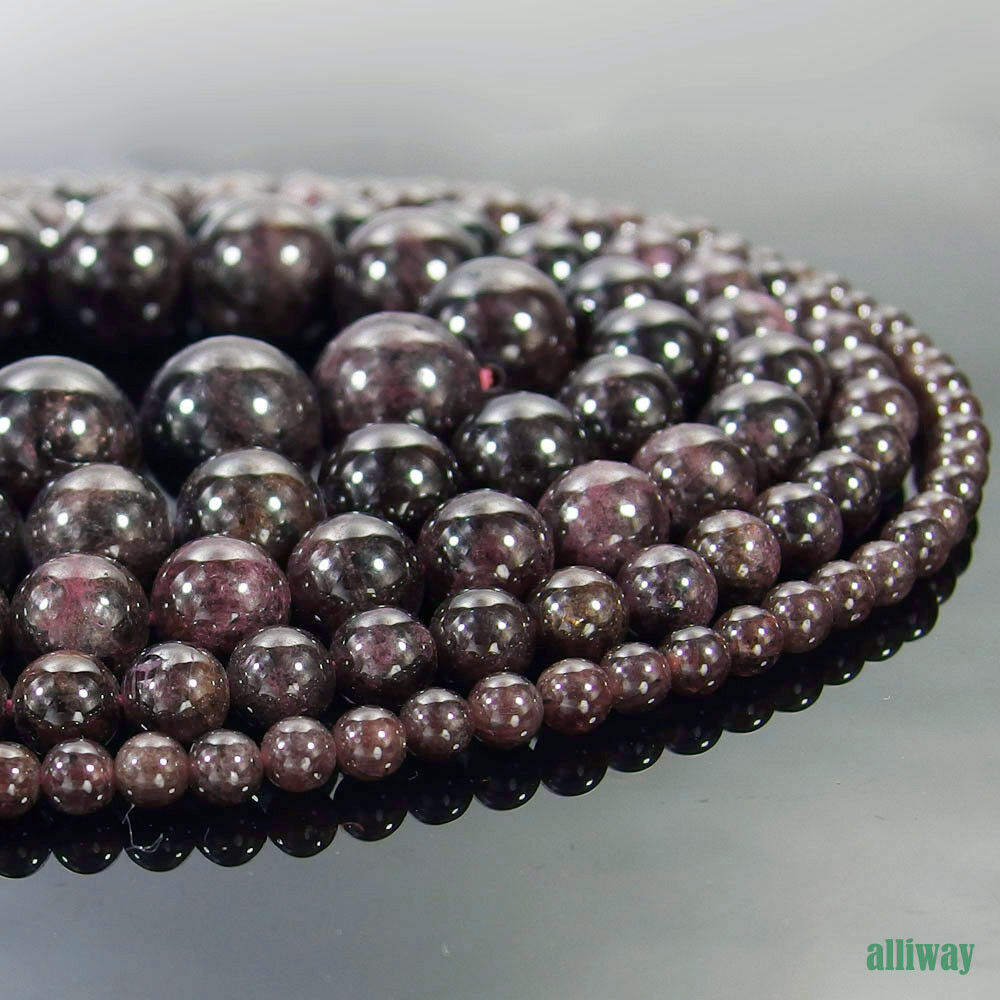-40%
1.47 ct Natural Oval-cut Olive->Red VS Garnet (Africa)
$ 155.23
- Description
- Size Guide
Description
1.47 ct Natural Oval-cut Olive->Red VS Garnet (Africa)New without Tags. This gem has never been used/placed/set in a setting.
It is utterly undamaged, unmarred and in perfect condition as expected of NWOTags.
I have included a Color-changing Garnet article below for your appreciation and enjoyment.
Summary from below:
"Color change garnet is an especially rare and valuable member of the garnet group of gemstones. It is highly desired for its distinct ability to change color depending on the type of light source with which it is viewed. The ability to color change is often erroneously mistaken for pleochroism, which is the ability to exhibit different colors depending on the viewing angle, whereas the phenomena of color change is not dependent on the viewing angle. Color change garnet is typically a hybrid-mix of spessartite and pyrope garnet and in many cases, may also contain traces of grossularite or almandine garnet." ... "Like most garnet gemstones, color change garnet is not known to be treated or enhanced in any way."
Type: Natural Color-Changing Garnet
(personally confirmed as Color-changing Garnet by digital refractometer (RI=1.728), dichroscope (singly-refractive), polariscope (expected ADR per rotation (Anomalous Double-Refraction); not glass), spectrometer, UV short&long-wave light, measured Specific Gravity=4.02) -- captej2012
Color: Olive-->Red 100%Color-Changing
(meaning the entire gem changes color, not only part of it)
Shape: Oval-cut
Dimensions: 7.60mm x 6.30mm x 3.50mm
Weight: 1.47 cts
Luster: Top Fire
Clarity: VS
(inside tip: when examining gems for you here, I refuse virtually all that do not show comforting/confirming inclusions because their presence is proof of Natural origins (not synthetic)) -- captej2012
Hardness: 6.5~7.5 rating on the Mohs Scale
Treatment: Not Heated, Not Enhanced, Not Treated
(Garnet is not responsive to treatment) -- captej2012
Origin: Africa
In 2002, we found this
Color-changing Garnet
at the Jewelry Mart,
And brought her home as Sister to Other Daughters.
In our care for all these years,
We celebrated her as
Dancing Dema
.
She still
dances-Olive
and
flashes-Red
to my quavering voice;
But this day, she dreams of more romantic and royal admirers.
We will miss her and envy who loves her away.
Sing sweetly and she will
dance-Olive
and
flash-Red
for you too.
We are now an eBay eStore enterprise focused on selling mostly Loose Natural Gemstones. Stay here, look around and learn. Via eBay Messaging, ask us questions, make an offer, and otherwise discuss your wishes, concerns and hopes. We pride ourselves as good-spirited folks having fun and doing our best to share the joy of Nature's most beautiful and enduring literal treasure -- Natural Gemstones. Expect to find us cheerful and trustworthy, and we will expect the same of you. For us, Negative FeedBack as a means of coercion is never needed and only degrades everyone's enjoyment in what should otherwise be a fun shopping experience. And finally, please enjoy my work as eBay's First (unofficial) Gemstone Poet. -- captej2012
==========================================================
Color Change Garnet Gemstone Information
About Color Change Garnet - History and Introduction
Color change garnet is an especially rare and valuable member of the garnet group of gemstones. It is highly desired for its distinct ability to change color depending on the type of light source with which it is viewed. The ability to color change is often erroneously mistaken for pleochroism, which is the ability to exhibit different colors depending on the viewing angle, whereas the phenomena of color change is not dependent on the viewing angle. Color change garnet is typically a hybrid-mix of spessartite and pyrope garnet and in many cases, may also contain traces of grossularite or almandine garnet.
With color change garnet, the intensity of color-shift can be quite dramatic, often surpassing that of the finest alexandrite. Most color change garnet will exhibit a brownish-green or bronze color when viewed under natural daylight, but when viewed under incandescent light, it will appear rose to pink in color. There are a variety of other color change combinations possible. In order to truly appreciate the full range of color change garnet, specimens should be observed under a variety of lighting conditions, including early morning daylight, late afternoon daylight, fluorescent light and incandescent light or candlelight.
Color change ability is an extremely rare occurrence that is known to occur in only a handful of gems. The color change ability is present in rare specimens that have formed with two light transmission windows (rather than one) that are approximately the same size. For example, a red gemstone will appear red because it absorbs all frequencies of light except for red; but a gemstone that absorbs all frequencies of light except for blue and red, will appear blue when the light source is rich in blue wavelengths, and will appear red when the light source is rich in red wavelengths. Fluorescent light is rich in blue, whereas incandescent light and candlelight are rich in red wavelengths. Natural daylight has a very well-balanced spectrum throughout most of the visible light wavelengths.
Color Change Garnet
Identifying Color Change Garnet
Theoretically, the garnet group is comprised of two mineral series - the aluminum silicates, consisting of pyrope, almandite and spessartite; and the calcium silicates, consisting of uvarovite, grossularite and andradite. The main differences among these members are slight variations in color, density and refractive index. Despite being distinct species with very distinct compositions, all garnet varieties share the same crystal structure; rhombic dodecahedron, twelve-sided crystals with rhombic faces. This crystal form is the hallmark of all garnet gemstones and minerals.
Other than the ability to change hue, color change garnet is identical to malaya (malaia) garnet by composition. Color change garnet can be easily identified from other garnet when viewed under different light sources. Color change garnet can sometimes be mistaken for alexandrite, but can easily be distinguished by its distinct level of hardness. Alexandrite is also rarely found in larger sizes, often weighing less than just a half carat, whereas color change garnet is commonly found in sizes well over one carat.
Color Change Garnet Origin and Gemstone Sources
As a group, garnet gemstones are a relatively common occurrence that form in highly metamorphosed rocks and igneous formations under extremely high pressure and temperatures. Today, the leading supplier of color change garnet is East Africa, particularly the Umba Valley in Tanzania. Other notable sources include Sri Lanka (Ceylon), Madagascar, Norway, Tunduru and the USA.
Color change garnet from East Africa is typically a mix of spessartite, grossularite and varying ratios of almandine or pyrope. The color-change is typically greenish-yellow to brown under transmitted fluorescent light and purplish-red under reflected fluorescent light; under incandescent light the color shifts from reddish-orange to red. Spessartite-grossular-pyrope specimens typically appear light bluish-green under transmitted fluorescent light and violet-purple under reflected fluorescent light; under incandescent light, the color shifts from light-red to purplish-red.
Sri Lanka (Ceylon) is known to produce a fine material which shifts from blue, green or grayish (daylight) to reddish-purple (incandescent light).
Some of the finest color change garnet is mined from Bekily in Southern Madagascar. This fine material is known to exhibit a very strong color change from greenish-brown to red-pink. Some may exhibit various shades of orange.
The USA's color change garnet from Idaho is mostly a mix of almandine and pyrope garnet by composition. This is famed for its red to purplish-red change.
Norway is known to produce a color change garnet which shifts strongly from violet (daylight) to claret (incandescent light) and violet-red to blue-green. The crystals from Norway are typically quite small, often weighing less than 1 carat, but they're prized because of their alexandrite-like intensity of color change.
Buying Color Change Garnet and Determining Color Change Garnet Gemstone Value
Color Change Garnet Color
Color change garnet changes hue based upon the source of light. The most common shift is from red to green. In daylight, color change garnet can appear green to gray and in some cases, blue. When viewed under direct incandescent light, colors can appear violet to purple similar to amethyst. Under candlelight, color change garnet can exhibit a deep almost blood-like color. Other color combinations that are possible are reddish-orange to red, greenish-yellow to pinkish-red, light-red to purplish-red and bluish-green to light violet-purple.
Color Change Garnet Clarity and Luster
Color change garnet is typically transparent, but inclusions are quite common like some other garnet varieties. Eye-clean specimens in large sizes are especially rare. The finest specimens exhibit a vitreous, glass-like luster once cut and polished.
Color Change Garnet Cut and Shape
Color change garnet is typically faceted to maximize its color shift ability. Ovals and round shapes are most common, but cushions and emerald step-cuts are also quite popular. Fancy shapes, including pears, hearts and trillions are quite rare, though not unheard of.
Color Change Garnet Treatment
Like most garnet gemstones, color change garnet is not known to be treated or enhanced in any way.
